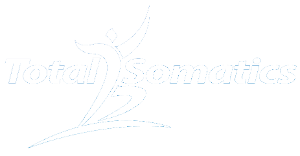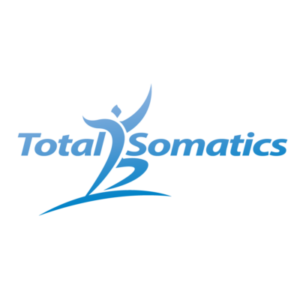What is Somatics? Frequently Asked Questions, ANSWERED!
I receive many questions about Somatics. At conferences, workshops, online and in clinic, people are wanting to know as much as they can about Somatics. Clients find the benefits are fantastic, from releasing muscular tension and tightness, to improving posture and increasing mobility. So when clients feel the benefits, they want to learn more so they can tell others! As a result of this happening often, I have created a blog to specifically answer frequently asked questions.
If you have any other questions, please let me know and I will answer them for you.
What is Somatics?
Somatics is a huge subject, yet I always repeat this statement to people,
“Somatics is Mindful Movement to Release Chronically Tight Muscles.”
Somatics is a mindful movement practice which improves the communication between your brain and muscles. Regular Mindful practice will change the level of tension and tone within your muscles, so your brain to muscles communication remembers how to contract and relax at the appropriate time. We are improving muscle memory so you can move more freely and not fear twinging your back when you bend, twist or reach for things during your daily activities. Somatics is empowering because you learn skills to help release muscle tension. Plus if you've ever rolled over in bed during the night and it triggered pain, knowing a specific somatic movement to release your tension can improve your quality of life tremendously.
How does it release muscle tension?
Somatics uses a 3 step process known as PANDICULATION. Pandiculation is what all vertebrates animals do (such as your cat or dog), they don’t stretch.
The 3 step process is as follows:
1) Contraction of muscles
2) Slow release
3) Complete relaxation.
Pandiculation is the action animals naturally do to either reset their muscles after activity or prepare for action. As a result of pandiculation, they remain agile and ready for action!
Pandiculation awakens an area within your brain known as the sensory motor cortex or brain map. This area of your brain controls various areas of your body. Due to daily pressures, poor habits and injuries, you become a creature of habit, repeating the same activities every day. As a result, your brain will adapt to a ‘new normal’ and change the level of tension and tone within your muscles. In time, you find yourself being held captive to very tight muscles and unable to move with ease. Pain can appear in the form a muscle fatigue, osteoarthritis, sciatica, disc issues, plantar fasciitis, tight hamstrings, lower back pain, jaw pain and the list could go on!
Unless you change how the sensory motor cortex or brain map is talking to your muscles, your muscles will continue to stay contracted. Pandiculation breaks the patterns of muscle tension affecting your movement and impacting on your pain.
TO READ MORE ON PANDICULATION AND PAIN CLICK HERE
How is it different to Stretching?
Within your muscles are sensors. These sensors monitor the level of movement and postures held throughout your day, week, months and years! If your sensors detect that a posture (such as being slumped over a computer, book or mobile device) is repeatedly being performed, the sensors will adapt and change to make this posture ‘the new normal.’ This information is relayed to the sensory motor cortex and the brain recalibrates, in effect creating a ‘software update’ to alter the muscle tension to what is now a slumped posture.
The 3 step process in Pandiculation acts like an interpreter. It brings both the sensory and motor neurons within your muscles to speak the same language again. Up until this point, their communication to contract and relax has not worked well. The sensory and motor neurons have been speaking different languages! So when the muscle contraction begins within the 3 step process we are bringing the sensory and motor neurons together, so they understand and recall how to contract, release and fully relax together. Pandiculation therefore needs the brain to communicate to the muscles. In Somatics we refer to this as “cortical training.”
When you stretch, you can use willpower to encourage a muscle to release. However, no amount of will power and ‘breathing through a stretch” will lengthen a muscle, unless you involve your brain. What commonly happens when a person decides to stretch is muscle cramp, pins and needles, back and hip aches after stretching or muscle spasms. A major reason for this is because you may have not been mindful of where your brain is telling you where your natural movement stops before it turns into a stretch. As a result of this, your stretch reflex kicks in. The stretch reflex is an inbuilt mechanism which protects your muscles from tearing, straining or over stretching. When we trigger the stretch reflex, we feel pain, cramps, spasm and it can also affect ligaments, tendons and joints.
TO READ MORE ABOUT STRETCHING CLICK HERE
Surely flexibility equates to healthy muscles! Right?
NO! Please don’t be mistaken for seeing social media images of eye watering back bends and elaborate poses and think this means that this person has ‘healthy’ muscles. Far from it. Many of the eye watering and elaborate poses you see on social media and within stretching classes are produced by people with a health condition of its own, Hypermobility. People with hypermobility are unable to detect where their natural range of movement ends and as a result suffer with dislocation, accelerated joint and disc degeneration and often leads to surgery on areas such as their knees, hips and shoulders.
I always ask clients, what would you like to be able to do? Wrap your legs around your head or be able to move freely with relatively healthy joints, efficient muscle control and coordination? As you can imagine, they all say the latter!
TO READ MORE ABOUT EFFICIENT MUSCLE CONTROL AND COORDINATION, CLICK HERE.
What is involved within Somatics to make it “mindful?”
I teach you how to notice the sensory feedback from your muscles, nervous system and other areas. When we slow down our practice and notice what is actually happening to the brain to muscle coordination, we can then start retraining new healthy movement patterns. Being mindful also allows for the 3 step process of pandiculation to develop, allowing your brain time to register the 3 phases. Deep breathing with a mindful approach is developed with somatic movement.
Within The Total Somatics Approach to Health & Wellness Online Program (www.TotalSomatics.com), I discuss with various support material and audios how you can develop mindfulness in your somatic practice and also within your daily activities. It is a very comprehensive and supportive element to the online program.
TO READ MORE ABOUT DEVELOPING A MINDFUL SOMATIC PRACTICE, CLICK HERE
Will it help with Stress?
Absolutely! When you are stressed, the subconscious area of your brain goes into autopilot for self preservation. You will exhibit specific stress postures. Unless you can identify when and how you switch into these postures, you continue to be held captive in them. Developing mindfulness with somatic movement allows your central nervous system to fully relax and as a result your pandiculations will be effective because your brain is conducive to learn new information when you allow your nervous system to switch from being stressed to ‘Rest and digest” mode.
With the various techniques applied with Mindful Somatic Movement, it allows stress levels to subside, helping your nervous system to slow down and recuperate.
TO READ MORE ABOUT DEVELOPING A MINDFUL APPROACH TO OUR SOMATIC MOVEMENT PRACTICE AND DAILY ACTIVITIES, CLICK HERE.
Why is Somatics more effective than stretching?
When you work intelligently with your body and use your brain to improve muscle memory, coordination and rhythm, you create LASTING changes. Clients are amazed when they practice somatics because they notice that the movements are slow and subtle, rather than being elaborate and bordering into the ego centric mindset of seeing how far you can take a limb. This action is not mindful and is not listening to how your nervous system is faring. Somatics considers the level of pressure your nervous system is currently under. Somatic movement allows muscles to relax, in a gentle and nurturing manner. Somatics focuses on good muscle and joint health, allowing your brain and body to work together with less of the ‘no pain, no gain’ or ‘breathe through the stretch’ mindset. Instead the mindset developed within Somatics is “let’s update my ‘software’ to allow my muscles to work more efficiently.” This is a kinder and much more holistic or somatic approach to long term health and wellness.
TO READ MORE ABOUT STRETCHING AND PANDICULATION, CLICK HERE.
Why makes Total Somatics the ‘go to’ choice?
Since launching The Total Somatics Approach to Health and Wellness Online Program in 2016, It has become a very popular choice for clients all around the world. Total Somatics is the first structured Somatics online program in the world, combining various aspects of our health and wellbeing to bring you a holistic or somatic approach to how we move, think, speak, perceive and what we take in. It is self paced and performed in the privacy and comfort of your on home. Periodically I upload new matrial for returning clients.
I have clients from around the world that have found The Total Somatics Online Program has helped them to develop not just a somatic movement practice, but also skills and knowledge in the areas of mindset, mindfulness and nutrition. Dr Sarah Wilson ND is within The Total Somatics Living series and together we discuss many health issues and nutritional subjects within our podcasts. So you receive plenty of support material to enhance your practice. Somatics is more than just movement, when you delve into the support material within the online program, you realise how important it is to be mindful in everything you do. The reason is because your nervous system is always tracking your actions, thoughts, behaviours and habits! As a result this can have a positive or a negative effect on your health and wellbeing.
TO READ MORE ABOUT THE CONNECTION BETWEEN YOUR MIND AND BODY, CLICK HERE
Where can I learn more about Somatics and how it can help me?
I have written a FREE ebook for you. I explain in greater detail what Somatics is and how it can help you. The ebook is packed with information and there are photos of clients before and after their Somatics practice. The results are amazing and that is because when we start working with our brain or software, we can change muscle length and tension very quickly.
TO DOWNLOAD MY FREE EBOOK, CLICK HERE
Also The Total Somatics Approach to Health & Wellness Online Program (www.TotalSomatics.com) explains in greater detail and you also get to experience the amazing benefits of pandiculation as I guide you through a structure approach to learning skills and applying knowledge.
I look forward to teaching you these amazing skills. You too can be like many of my clients, singing the praises of PANDICULATION and how it has reduced pain, improved posture, increased mobility, helped to develop mindfulness and allowed you to return or continue pursing activities you love to do.
If you have any further questions or are using the online program and would like more advice, please don't hesitate to contact me at support@totalsomatics.com
Take care,
Heidi Hadley xx
www.TotalSomatics.com

















